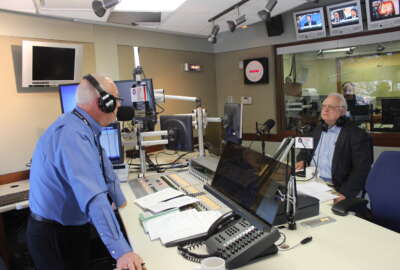
Picking a health plan not rocket science, or is it?
Most people know there are ways to save money on health insurance, but Senior Correspondent Mike Causey says there are also ways to actually make money while...
The 2017 health insurance hunting season ends Dec. 12. If you do nothing, that is stay in the same plan you’ve been in since 1973, that’s fine. You will have excellent coverage. Doing nothing is one of the many options you have.
Regardless of what you do, the government will pick up the lion’s share of the total premium (paying between 72 percent and 75 percent of the total). You have a wide variety of choices ranging from nationwide plans like Blue Cross, GEHA, NALC, APWU and Aetna, or a batch of health maintenance organizations, Kaiser, CareFirst, United HealthCare, Aetna and MD-IPA. If you are in an HMO and you move, you can pick another plan. You can also have your own personal open season if you get married, divorced or lose a spouse, if you have or adopt a baby and your family situation changes.
The good news is that it’s hard to go wrong with any of the 30-plus plans and options offered to federal workers, postal employees, retirees and their survivors and even, in some cases, ex-spouses. But failure to shop means that you could find yourself in a plan that doesn’t include your doctor in its network. Or a plan whose premiums have crept up over the years while equally good options are out there. You can easily pay $2,000 more than necessary in premiums because you failed to consider an option to your current excellent (but too expensive) plan.
Walton Francis, editor of Checkbook Guide to Health Plans for Federal Employees and Annuitants, will be our guest Wednesday (10 a.m.) on our Your Turn radio show. He’s ready to take calls live (showtime is 10 a.m. to 11 a.m. EST) or you can email them to me: mcausey@federalnewsradiodot.com. You can also listen to the Nov. 16 and Nov. 23 shows (they are archived on our Your Turn page) for shopping tips.
Francis estimates that 30-40 percent of all feds (and a higher percentage of retirees) are probably paying too much for what they get. By shopping around, they could easily save money in premiums and out-of-pocket costs. But, in fact, only about 6 percent of all the enrollees change plans each year. What should look for:
- Check out the limit-to-you feature of the plan you are considering. That’s how much you would have to pay out of pocket next year if you or a family member (or the whole family) has a catastrophic illness or accident. For a family of two, that limit next year is between $7,000 and $9,000 for a family of two in the Kaiser, CareFirst to $15,000 or more in the NALC CDHP, MHBP or SAMBA plans. The catastrophic limit is the single-most important feature of your health plan. Hope for the best, but plan for the worst.
- Check if a plan similar to yours has a lower premium. That can easily save you $1,000 to $2,000 in premiums with no reduction in coverage or service.
- Make sure your favorite doctor will be in-network of the plan you are currently in or are planning to join.
- Do you know what a Consumer Driven, High Deductible health plan is? And why Walt Francis calls some of them “IRAs on steroids”? If not, find out.
- Do you know the difference between a fee-for-service plan (like Blue Cross or GEHA) and a health maintenance organization? Many are now very similar, but HMOs have some features —like low premiums and low or no deductibles — you should know about.
- If you are currently under your private sector spouse’s health plan but need to switch to the federal employee program when you retire, you better know what the five-year rule is, and how it works. And you need to know at least five years before you retire. Or else.
Has your agency subscribed to Checkbooks online shoppers guide for you? Find out by clicking here:
https://www.checkbook.org/newhig2/more.cfm
Hope you can listen tomorrow morning. It could save you a lot of money.
Nearly Useless Factoid
In 1615, English poet and author Gervase Markham recorded the earliest sponge cake recipe in English.
Source: What’s Cooking America
Copyright © 2025 Federal News Network. All rights reserved. This website is not intended for users located within the European Economic Area.
Mike Causey is senior correspondent for Federal News Network and writes his daily Federal Report column on federal employees’ pay, benefits and retirement.
Follow @mcauseyWFED





